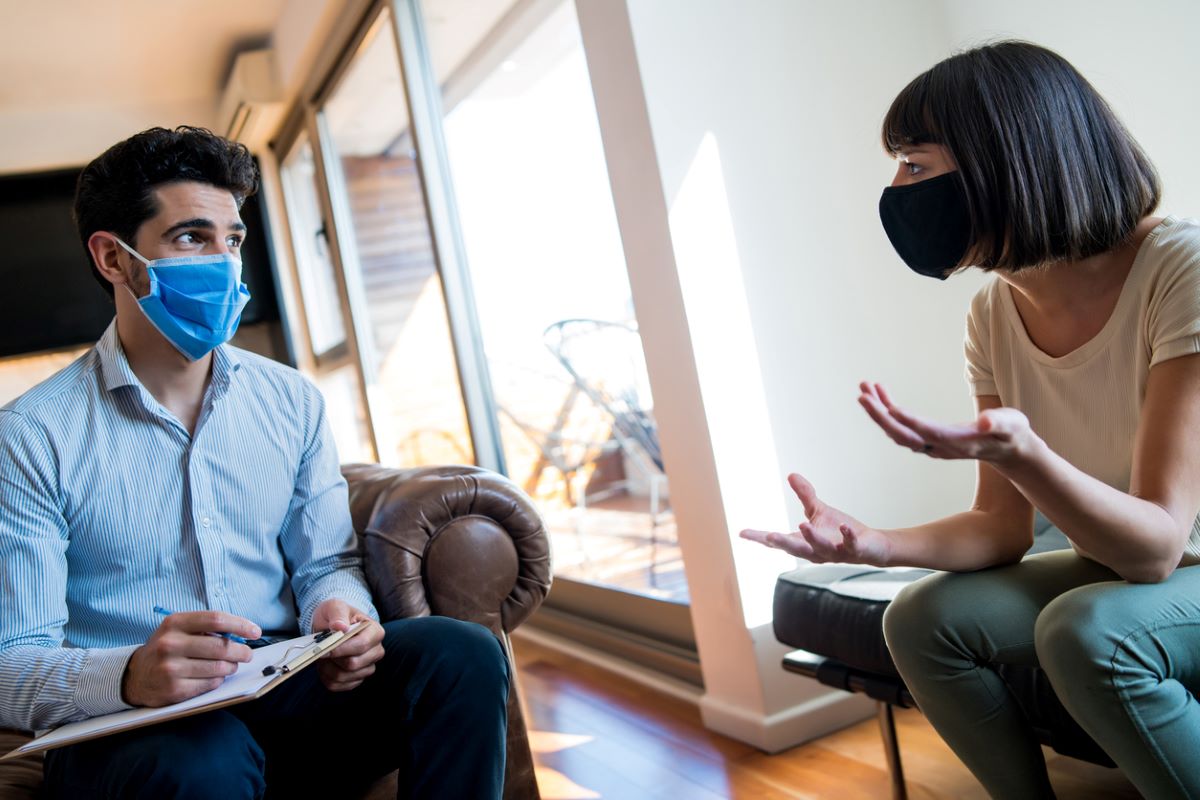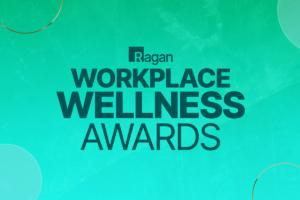Mental health issues from severe COVID-19, the state of the gender pay gap and more
Curating the week in wellness March 14-18, 2022.

Hello, wellness pros!
This week kicked off Daylight Savings and March Madness, plus many recognized Equal Pay Day and St. Patrick’s Day. We are here today with a collection of thought-provoking articles, tips and takeaways for the week.
Please get in touch with any ideas, suggestions or feedback on how we can serve you better or cover topics that are top-of-mind at your organization. Email: kaceyl@ragan.com.
1. Study links severe COVID-19 to mental health challenges.
At the two-year mark of the COVID-19 pandemic, there is still much that is unknown about its impact, including the effects of “severe COVID-19” on people’s health. Published in the Lancet Public Health, the study of nearly 250,000 people across six countries focused on the extent varying acute infection severity in COVID-19 may predict long-term mental health symptoms. The study found that patients who experienced severe acute COVID-19 illness — defined as people who were bedridden for at least seven days — had a higher risk of depression and anxiety months later.
Reporting on the study by Employee Benefit News shows that, while the mental health effects weren’t equal for all people impacted by COVID-19, those who had severe COVID-19 were about 60% more likely to experience symptoms of depression and anxiety. Conversely, those who had less severe COVID-19 showed fewer symptoms of depression and anxiety that people who never had the disease. While the impacts of long COVID-19 — persistent physical and mental symptoms lingering beyond two months of infection — may qualify employees for workplace accommodations, the study’s findings reiterate that mental health support is an important component of the assistance employers should provide.
2. The state of the gender pay gap.
On International Women’s Day earlier this month, the U.K.-based Gender Pay Gap Bot added a wrinkle to the occasion by tweeting the gender pay gap of U.K.-based companies who choose to recognize the holiday. The premise: Spotlight companies that tout their support of women employees, but who underpay them.
The Twitter bot was able to report the pay gaps of U.K. companies because the law there requires employers with staff of 250 or more to report their gender pay gap to the government. Payscale’s 2022 State of the Gender Pay Gap Report analyzed an “opportunity pay gap” and found that women earn $0.82 for every $1 that men make.
Payscale admits its data is weighted toward salaried professionals with college degrees, so its data does not reflect the gap for lower income hourly workers. This matters because when women with lower wages leave the workforce — as many did during the COVID-19 pandemic — it impacts the median pay for women, which may give a false impression the pay gap is closing.
The pay gap for women of color is even higher: For every $1 men earn, American Indian and Alaska Native women earn $0.71 ; Hispanic women earn $0.78; Black and Native Hawaiian and other Pacific Islander women earn $0.79; white women earn $0.82; and Asian women earn $0.97. Payscale’s report also finds there is a “motherhood penalty,” which reflects in an opportunity pay gap of female parents, who earn $0.74 compared to every $1 earned by a male parent.
It is one thing to see these pay disparities and another to act on them. And while the consequences of a Twitter bot calling out your company might be hard to quantify, calls for pay transparency regulation are on the rise.
3. Should debt management be an employee benefit?
A recent Financial Health Network survey found that 47% of respondents (full-time employees at mid- and large-sized companies) reported not being able to pay all their bills on time within the last 12 months. Also, 50% of respondents indicated debt is a source of stress and they spent on average at least one hour per week dealing with debt-related issues during the workday in the past month.
Employers offering a debt-related financial wellness benefit could pay dividends amid soaring quit rates, with 62% of respondents saying they are more likely to stay at a job offering useful debt-related financial wellness programs. In coverage of the survey, Benefits Pro offers three recommendations:
- When designing debt-related financial wellness benefits, confidentiality practices need to be emphasized to ensure an employee’s debt loads are not revealed to managers or employers.
- Employees value ease of access, clear explanation of benefits and access to personalized help when considering participation.
- Conducting your own employee surveys might reveal the needs of your workforce and where current financial wellness offerings are falling short.
4. Accommodate learning differences.
The nonprofit organization Understood aims to drive conversation and inclusive action for those who think and learn differently. Yvonne Cowser Yancy, chief administrative officer at Understood, spoke with Forbes to share how employers can accommodate different learning styles.
When working with organizations, she has two primary goals:
- Push to build communities that create meaningful change for underrepresented candidates.
- Disrupt exclusionary practices, like application processes, that don’t offer accommodations or DE&I strategies that leave out learning differences.
Cowser Yancy also wants to dispel the myth that creating accommodating and inclusive spaces is cost prohibitive when the average cost to support an individual with a learning difference or disability is $500.
“The real question is: What are you going to do differently? Does your space and your organization reflect the environment you would like for it to have? Does it create a space where people who are diverse aren’t just there, but they’re actively included?” Cowser Yancy says. “You have to ask yourself what the actionable work is.”
5. Get some (better) sleep.
With many across the U.S. losing an hour this past weekend due to Daylight Savings and World Sleep Day this week, it’s a great time for wellness pros to promote healthy sleep — and offer employees tools.
According to the State of Sleep in America 2022 Report from Gallup and Casper, stress and sleep quality are deeply connected. Those who indicated feeling a lot of stress the day before were twice as likely to report not sleeping well compared to those without high stress levels.
A sleeper’s mental and emotional state is the most important factor affecting sleep quality, according to the study. And it affects young adults’ sleep quality the most. Sixty-four percent of adults aged 18-29, 57% of adults 30-39 and 52% of adults 40-49 say they experience stress “a lot.” That same group reports sleep has a major impact on their mood, ability to have fun, health generally and day at work.
How can employers try to help employees get better sleep? Allwork shares three tips:
- Make sure employees are signing off from work at a reasonable time. Ideally, people should turn off all electronic devices at least 30 minutes before going to bed.
- Encourage employees to avoid working from their bed or couch as this blurs the line between work and relaxation.
- Regular exercise improves sleeping habits, so encourage that connection.
COMMENT
Ragan.com Daily Headlines
RECOMMENDED READING
Tags: COVID-19, debt, financial wellness, gender pay gap, learning differences, pay equity, physical wellness, sleep quality






